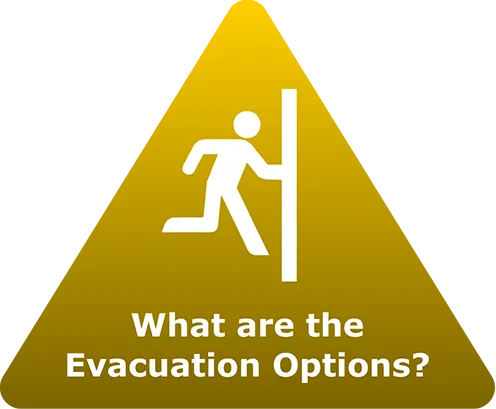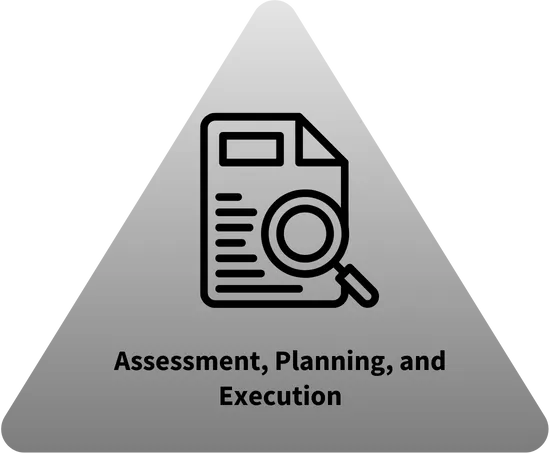
WUI Fire Evacuation and Sheltering Considerations — Assessment Planning and Execution
TFRA usage considerations

Credit: Paradise Police Dept. (top, middle), NIST(bottom)
Photos show the conditions at the Paradise Plaza TRA during the Camp Fire. The bottom image shows a view of the entire parking lot and indicates where photos a) and b) were taken.
Public education will be critical to the successful utilization of TFRAs. No-notice events may force residents to make quick decisions and seek the use of their nearest accessible TFRA even before any official evacuation notifications are issued.
Access
Civilians can reach the TFRA on foot, mobility scooter, or another vehicle. Residents need to be aware of the TFRAs near their homes (via education campaigns). When instructed (sirens, reverse 911, SMS) or when local conditions require it, residents should use the TFRA near their home that they can safely reach.
Vehicles
The use of a vehicle to provide shielding from fire, embers, and smoke will depend on local conditions. While a vehicle can provide enhanced protection, vehicles readily catch fire in moderate to severe WUI exposures. A single vehicle in a large TFRA will only partly compromise the TFRA. Multiple vehicles tightly packed can become a hazard, as one ignition can rapidly spread to other vehicles resulting in severe exposures and rendering the TFRA useless.The size of a TFRA will dictate its capacity and local conditions will ultimately drive decisions to use TFRAs.



